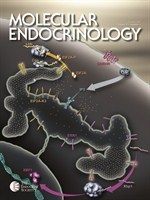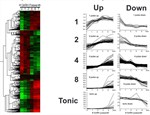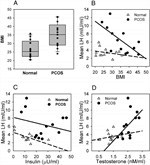Lawson Lab
- Research
- Lab Members
- Publications
- Contact
Here is a brief description of our research interests. If you would like more information on our most current research, contact us.
 The reproductive hormones Luteinizing Hormone (LH) and Follicle-Stimulating Hormone (FSH) are synthesized and released by the gonadotrope cells of the anterior pituitary. Both processes are controlled by the hypothalamic peptide hormone Gonadotropin-Releasing Hormone or GnRH. Our lab has shown that GnRH regulates protein synthesis through the activation of the translation initiation machinery and ensures protein quality by activation of the unfolded protein response. We are currently investigating how these processes contribute to the overall function of the gonadotrope and ultimately to reproduction.
The reproductive hormones Luteinizing Hormone (LH) and Follicle-Stimulating Hormone (FSH) are synthesized and released by the gonadotrope cells of the anterior pituitary. Both processes are controlled by the hypothalamic peptide hormone Gonadotropin-Releasing Hormone or GnRH. Our lab has shown that GnRH regulates protein synthesis through the activation of the translation initiation machinery and ensures protein quality by activation of the unfolded protein response. We are currently investigating how these processes contribute to the overall function of the gonadotrope and ultimately to reproduction.
 The relative synthesis and release of LH and FSH impacts gonadal function and the proportions of each hormone released into the general circulation determine reproductive status. The relative synthesis of each hormone is controlled by pulsatile stimulation of the anterior pituitary by GnRH. we are investigating the mechanisms regulating relative gene expression through changes in GnRH pulse frequency and amplitude.
The relative synthesis and release of LH and FSH impacts gonadal function and the proportions of each hormone released into the general circulation determine reproductive status. The relative synthesis of each hormone is controlled by pulsatile stimulation of the anterior pituitary by GnRH. we are investigating the mechanisms regulating relative gene expression through changes in GnRH pulse frequency and amplitude.
 Hormones and metabolic factors communicate the current status of many physiological systems to the tissues of the body. In the pituitary, these signals can modify the production of reproductive e hormones. This in turn has a great impact of reproduction. We are investigating how other signals are decoded by the pituitary and impact the pituitary response to GnRH stimulation.
Hormones and metabolic factors communicate the current status of many physiological systems to the tissues of the body. In the pituitary, these signals can modify the production of reproductive e hormones. This in turn has a great impact of reproduction. We are investigating how other signals are decoded by the pituitary and impact the pituitary response to GnRH stimulation.
 The GnRH-producing neurons of the hypothalamus are the master regulators of reproduction. As the source of GnRH, we are interested in the development and regulation of these cells. Our current work has focused on the role other hormones play in the production and secretion of GnRH from these highly specialized cells.
The GnRH-producing neurons of the hypothalamus are the master regulators of reproduction. As the source of GnRH, we are interested in the development and regulation of these cells. Our current work has focused on the role other hormones play in the production and secretion of GnRH from these highly specialized cells.
